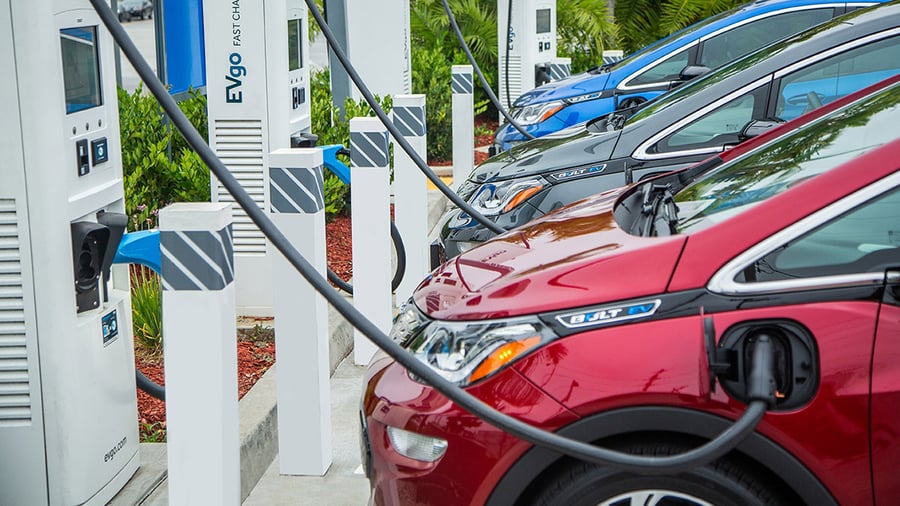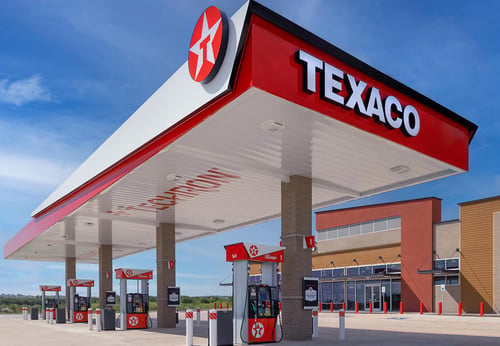Electric Vehicles and Their Impact on Gas Station Sales

With electric vehicles on the rise across the U.S. and around the globe, it has some questioning if gas stations will soon go the way of landlines, fax machines, and VCRs.
While it may be hard to fathom a world without gas stations, especially for an American public that has been filling up their tanks for more than 100 years since the first Model T’s started rolling off Henry Ford’s Detroit assembly lines, keep in mind that at the turn of the 20th century blacksmith shops still dotted the land, with some 400 blacksmith shops in Brooklyn, alone.
The advent of internal combustion engine vehicles, however, soon made blacksmith shops superfluous … will electric vehicles (EVs) do the same to gas stations in the coming decades?
The Future of the Gas Station is in Doubt
While it is premature to pronounce the death of gas stations, there is no doubt that the industry must adapt or potentially go the way of the blacksmith.
“Slowly but surely, electric cars and trucks are taking over American highways,” wrote Rebecca Heilweil in Vox in April. “The White House aims for half of new vehicles sold in the US to be EVs by 2030, and auto giants like GM and Volvo want to go all-electric in a similar time frame. As utility companies hurry to expand the number of charging stations — a critical step for the EV transition — the future of the gas station is in doubt.”
The Boston Consulting Group (BCG) argued before the onset of the pandemic that the coming EV revolution was just part of a sea change sweeping across the gas station industry.
“A number of far-reaching trends are disrupting the fuel retail market. Among the most powerful of these are the rise of alternative fuels (particularly electricity) for mobility, the emergence of new models in mobility, and the evolution of heightened consumer expectations around convenience and personalization,” said BCG. “The impetus for these disruptions comes from an array of powerful new digital technologies—everything from artificial intelligence (AI) to robotics to the Internet of Things (IoT).”
EV Charging at Home and Other Non-C-Store Locations
If it was a matter of simply swapping over c-stores to charging stations from gasoline sales, then it would only be a matter of retrofitting, but a real wildcard is that EV charging can be accomplished at home and other locations such as office garages, strip mall parking lots, and highway rest areas.
“While some gas stations have taken the leap and installed charging ports alongside their pumps, people tend to do the lion’s share of their EV charging at home,” wrote Heilweil.
Some estimates show that there are already as many public EV charging ports in the U.S. (approximately 108,000) as there are gas stations (estimated between 110,000 and 150,000).
“The beauty is that you’re not locked into a gas station,” Rob Barrosa, a senior director of sales and marketing at Electrify America, an EV charging network and subsidiary of Volkswagen, told Vox. “How do we get the power to where we want it? That’s a much easier problem to solve than having to deal with big, huge gas tanks that you’ve got to bury into the ground.”
Fuel Retail Market Could Take a Big Hit by 2035
The BCG analysts looked at four possible future market environments and estimate that, in the worst case scenario, as much as 80 percent of the fuel retail market could be in the red by 2035.
“Although the environments differ from one another markedly, a significant portion of the fuel retail network in some markets could be unprofitable by 2035—even in the scenarios in which new mobility models are less disruptive and fossil fuel sales do not decline precipitously,” said BCG. “In a market environment in which electric vehicles (EVs), autonomous vehicles, and new mobility models take off rapidly, up to 80 percent of the fuel-retail network as currently constituted may be unprofitable in about 15 years.
C-stores depend on traffic inside their stores and fueling up the gas tank is a big driver, so in a world without the need to stop for gas, c-stores will need to reinvent themselves to survive.
3 Actions That Gas Stations Can Take for the Future
The BCG analysis says that fuel retailers can take three specific steps to help navigate the way forward:
- Move from a Vehicle-Centric Business Model to a Customer-Centric Model: To capture new product and service opportunities, gas stations will need to reimagine the overall customer journey, utilizing digital tools to create customer relationships that extend past occasional visits.
- Transform Their Network of Service Stations and Assets: Formats will need to be changed in some locations to meet customer demand, some locations will need to be divested that are not profitable, and investments will need to be made in assets that support new products and services.
- Develop New Capabilities: Gas stations will need to develop new digital expertise, and, in some cases, capabilities related to entirely new areas such as last-mile logistics or real estate.
“To successfully adapt, fuel retailers must embrace a new mindset. Making modest changes or tweaks to the business will not suffice. Instead, companies must fundamentally rethink their business and aggressively embrace innovation and new technology. Those that boldly seize the opportunity will find themselves in a winning position. Those that do not may be left behind,” concluded BCG.
The good news is that the pandemic has already forced some gas stations to adjust their offerings, leaning into items such as prepared food to go and food delivery during lockdowns.
Some Gas Station Owners are Becoming Fuel Agnostic
Vox reported that many gas stations are already retrofitting their set-ups to accommodate EV charging stations.
“To adjust this business model for the EV era, some gas stations are now installing Level 3 chargers, which can deliver as much as 20 miles of range per minute, alongside their old pumps and convenience stores. Some of these fast chargers make EV charging almost as speedy as filling up a gas tank the old-fashioned way, and they’re much faster than what people typically use at home,” said the Vox article.
Some gas station owners are becoming fuel agnostic, appealing to traditional gas-powered vehicle owners needs along with an equal amount of attention to the newer EV owners.
In June, for example, the C-store chain 7-Eleven announced plans to install 500 charging ports at 250 of its locations by the end of 2022.
"Adding 500 charging ports at 250 7-Eleven stores will make EV charging more convenient and help accelerate broader adoption of EVs and alternative fuels. We are committed to the communities we serve and to working toward a more sustainable future,” said 7-Eleven President and CEO Joe DePinto.






.webp?width=500&name=tl(15).webp)